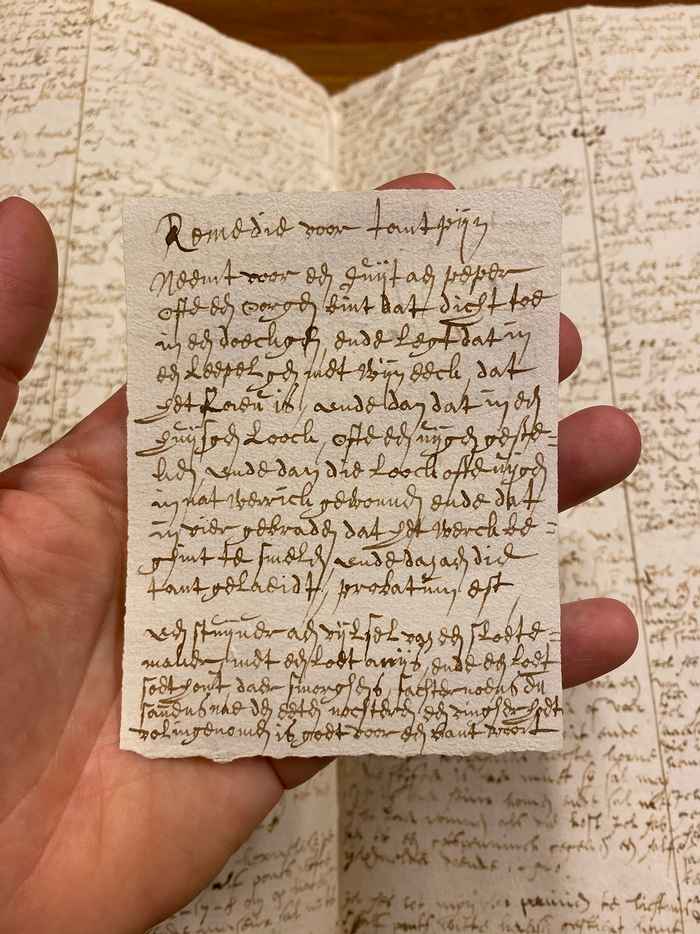Unique discovery: 17th century through a woman’s eyes
10 November 2022
Our image of the 17th century still relies heavily on male eye witness accounts. That makes the discovery of a woman’s memory book – and what’s more a woman who acted independently – extra special. Maria van Nesse lived in Alkmaar and was not only very well-off, but also unmarried. That gave her a lot of freedom to organise her own life as she saw fit.
Perception of men’s world is outdated
Van Nesse bought art, household products and liturgical objects for her church, and visited prominent artists from Alkmaar. From 1623 to 1646, she kept a housekeeping book: she carefully noted down all her expenses and she described events that she wanted to remember. All kinds of aspects of daily life come up in the book, from recipes and medical advice to celebrations, burials and having clothing and paintings made.
The book provides, among other things, important new perspectives on the 17th century art market, states Judith Noorman, who is affiliated with the University of Amsterdam as an art historian. ‘People always say that 17th century art was made for and by men, but this completely new source shows that the perception of that men’s world is totally outdated. Van Nesse made as many as 100 art purchases and describes that in detail.

Maria van Nesse is instantly the best-documented art buyer of Rembrandt's time, male or female.Judith Noorman
From social network to St Nicholas Eve presents
In order to be able to transcribe more then 200 hundred pages of hand-written text in a short space of time, the researchers called in the help of 20 volunteers from Alkmaar. In addition, Noorman and Van der Maal delved into the archives in order to learn more about Van Nesse who was unknown until recently. In their book, they show her life in minute detail: from the house where she lived to her social network, how she filled her days and the St Nicholas Eve presents she bought.
The book therefore provides a unique glimpse into the daily life of a 17th century woman. ‘No matter how well the 17th century may have been studied,’ says Noorman, ‘the picture of that period is still partly blurred. We know a lot about major artists and seafarers from that time, but it has always been difficult for us to imagine what daily life was like – let alone the life of a woman. That has finally changed now with Maria van Nesse.’

